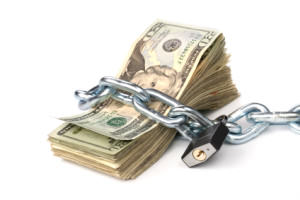
Unfortunately, as an employer, you are accountable for responding to garnishment order. On top of just being uncomfortable, handling garnishments requires a boatload of administrative work that can take you away from concentrating on your core business. Plus, many legal issues can also pop up for your company if garnishment is not handled properly.
Below, we will cover what a garnishment entails and what your requirements are as an employer if you receive a garnishment order.
1. What is the garnishment process?
The employer is sent a “writ of garnishment”, or garnishment order, when an employee is subject to wage garnishment. This is issued either by a government agency or by a court (in the case of consumer debts, such as bank loans or credit cards). The federal government can avoid going through the court to preform garnishment administration for federally-backed loan or delinquent tax debts.
Once the employer receives the writ of garnishment, the employer is required to immediately start withholding the garnishment from the employee’s checks. The employee will also be alerted of the garnishment order and will have a set amount of time to contest the order (the set time period is dependent on state law).
In the event of employee contention, the employer should stop paying the creditor immediately and send the withheld money to the agency or court that issued the garnishment. It will then be held by the court or agency until the dispute is resolved.
2. How are garnishments calculated?
Don’t fret! Each garnishment order comes with a garnishment calculation worksheet. Employers should use this worksheet to determine how much money should be withheld. Any pay, which includes all wages, bonuses and commissions should be included in the garnishment calculations.
For child support garnishments, up to 50-65% can be garnished (depending on the situation.) For commercial debt garnishments, a maximum of 25% of the garnishee’s disposable income can be garnished.
For delinquent tax garnishments, the IRS uses a special chart to determine the maximum amount of wages that are subject to garnishment (see http://www.irs.gov/pub/irs-pdf/p1494.pdf) – but it’s often up to 70% of an employee’s wages. For garnishments related to student loans, only 15% of wages can be garnished.
It is very important that the employer withholds the correct amount for garnishments. If there are any questions regarding how much should be paid, employers are instructed to contact the agency or court that issued the garnishment.
3. How do you prioritize garnishments?
There is often a lot of confusion surrounding employees who are subject to multiple garnishments. Simply speaking, the first garnishment order received is given the higher priority. However, there are exceptions to this rule. Child support and IRS garnishments are prioritized over other debts.
Also, if the maximum legal amount is already being withheld when a tax or child support garnishment is received, the other garnishments will be reduced or stopped so that this garnishment can take effect.
4. How do garnishments end?
Garnishments can end in various ways depending on the state laws. Some writ of garnishments include an end date. The garnishment will end on this date even if the debt is not paid in full. Another way that garnishments end are if the employer receives a “Notice of Termination of Wage Garnishment Order”.
If this noticed is received, an employer should immediately stop withholding the garnishment.
5. What else do employers need to know about garnishments?
Although dealing with wage garnishments can create more work for employers, it is imperative that employers correctly comply with any garnishment orders. There could be many legal repercussions if they are ignored.
Also, under the Consumer Credit Production Act (CCPA), employees cannot be fired or disciplined in any way for their first garnishment (this does not apply to multiple garnishments). Finally, some states offer financial reimbursement for employers to cover the administrative costs of implementing garnishment.
Learn how EPAY can help handle the complexities of garnishment for you. We can handle garnishment implementation, processing and payments for you!
